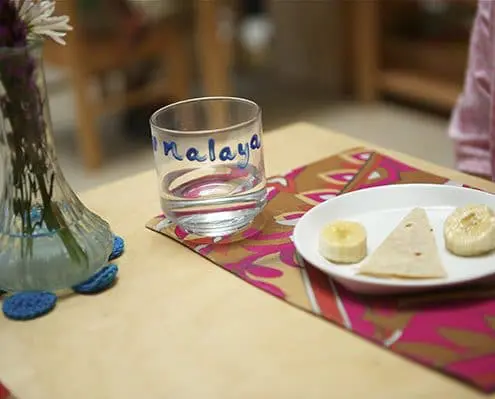The basic principle behind the Montessori methods is that “Children Teach Themselves.” Dr. Maria Montessori came to this conclusion after observing children in several countries and in a variety of settings and utilizing her background in psychology and medicine. She concluded that the human mind is constructed to organize and learn of the environment. Dr. Montessori created the concept of the “prepared environment.” The environment of the child consists of other children, the adult and the physical objects around the child.
Thus, the Montessori approach to managing misbehavior and supporting the child’s inner psychic development is control of the environment, not the child. The adult’s own personality – attitudes, values, beliefs, feelings – is notably most resilient to effective “preparation.” Dr. Montessori considered the inner preparation of the adult to be essential. Integrity, courage, patience and humility are the foremost qualities of an effective Montessori teacher.
A key principle in the Montessori classroom is observation. It is the total sensory awareness of an event or occurrence. Such profound sensory awareness by the adult is comparable to that of the scientist — open-minded, non-prejudicial, inquiring, humble, patient.
The environment only contains “real” objects. The children do not use paper or plastic plates or plastic utensils; they work with real plates and drink out of real glasses. If the plates or glasses break, the child learns about caring for materials and caring for their environment. This sets the foundation for problem-solving and teaches children how to behave in social situations and how to become self-sufficient. They interact with children younger and older. It allows them to care for others not just themselves and teaches them the concept of “giving and receiving.”
Another area in the classroom is the “Sensorial” area. Here we have materials that help refine the senses. Nothing goes to the intellect without going through the senses. This area also contains extensions such as geography, geometric shapes, flags, and movement. Children learn about smells, textures, weights, colors, shapes, depth, width, length, size, memorization, and taste.
The next area in the classroom is “Language.” We build the children’s vocabulary, develop the hand for writing, teach the reading sounds, and introduce grammar concepts such as adjectives, conjunctions, articles, etc. The children also work with botany by identifying parts of a flower, parts of animals, and other language relating to Botany, Zoology, and geometric shapes.
In the classroom, the children learn about “Math” through concrete materials. At a young age, children do not have the ability to understand math through abstract methods such as writing or memorization. They need to see and feel to understand. With the Montessori materials such as beads, the children actually learn to count numbers into the thousands. They learn how to multiply and divide, add, subtract, sort, and classify which will set them up for abstraction once they reach the elementary school age.

